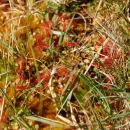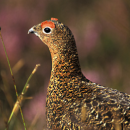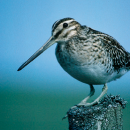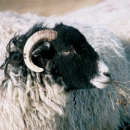11th July 2011
 The Moorland Association has joined four other leading land management and conservation organisations in the Peak District National Park to boost birds of prey numbers in the Dark Peak.
The Moorland Association has joined four other leading land management and conservation organisations in the Peak District National Park to boost birds of prey numbers in the Dark Peak.
The organisations – the MA, the National Trust, Natural England, Peak District National Park Authority and RSPB – have set targets for healthy populations of merlin, peregrine and short-eared owl. Together the five organisations have funded independent field workers to help achieve their aims, by working locally with land managers and birdwatching groups.
The group is chaired by one of the directors of the Peak District National Park Authority, John Lomas. He said: “We have been working together since 2008 to look for a common approach to the future of birds of prey in the Peak District. We know that issues surrounding birds of prey can be a source of disagreement and conflict, but our aim is to have a shared approach that will gradually ensure a more harmonious future. We recognise there may well be some issues of challenge that remain, but this initiative is making progress. With continuing co-operation I believe we can achieve a good outcome for these special birds and their habitats in a way that considers all our interests.”
The moors concerned cover approximately 50,000 acres, are largely managed for red grouse and most fall into a European Special Protection Area (SPA), which means they are internationally important for populations of vulnerable bird species, including short-eared owl, merlin and peregrine falcon. The partnership has used past population levels and habitat availability to produce targets of:
• Merlin – increasing from current 22 breeding pairs to 27 by 2013 and 32 by 2015
• Peregrine falcon – increasing from current 13 breeding pairs to 15 by 2015, filling gaps in distribution
• Short-eared owl – maintaining current population averaging 25 breeding pairs to 2015.
Said Richard May, who represents the Moorland Association in the area: “Grouse moor management has created a wonderful habitat of rare heather moorland for these birds, and there is also a rich source of smaller ground nesting birds for them to eat thanks to the control of corvids and mammal predators carried out by grouse moor gamekeepers. Grouse moor management and carefully monitored numbers of birds of prey can and do work in harmony.”








